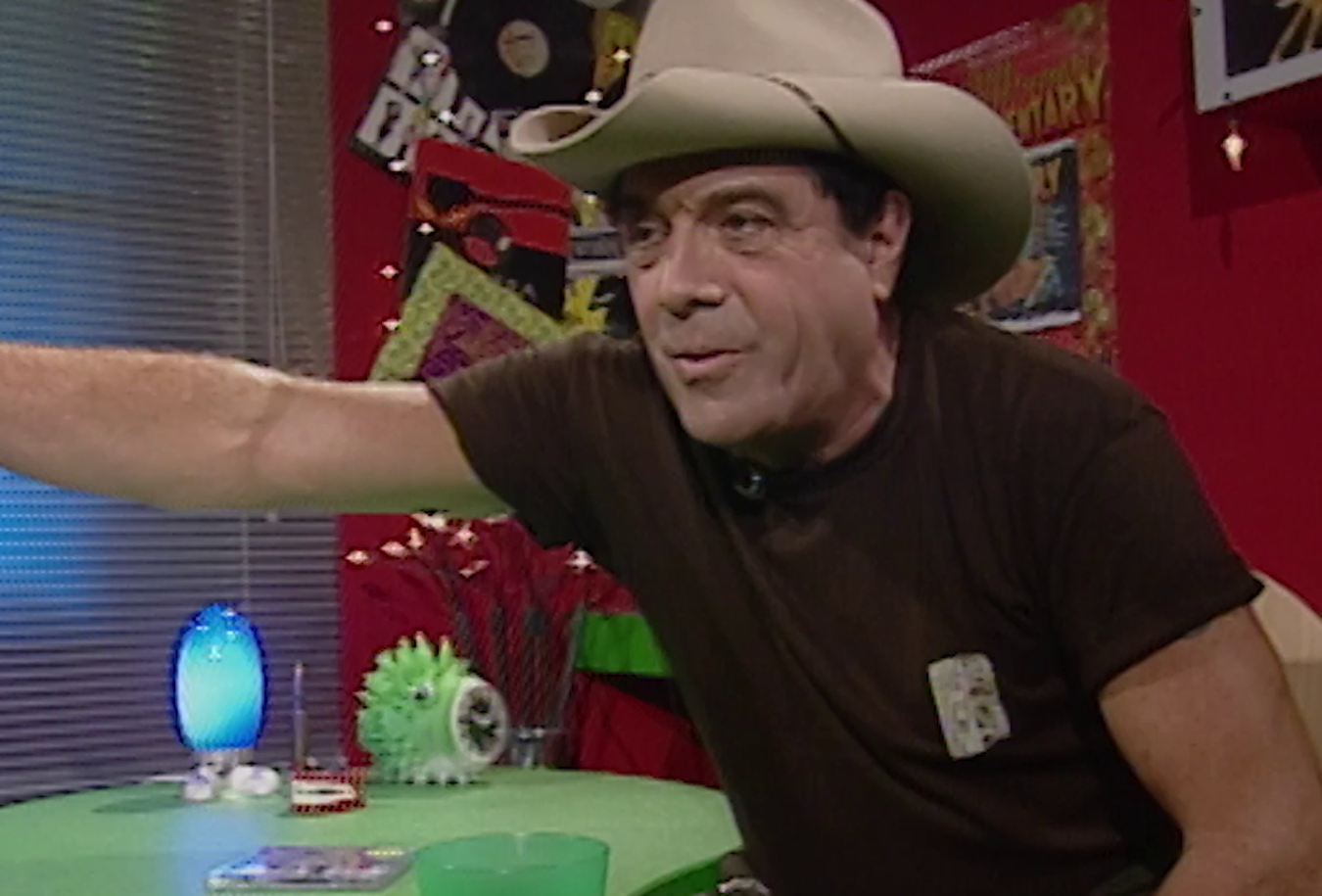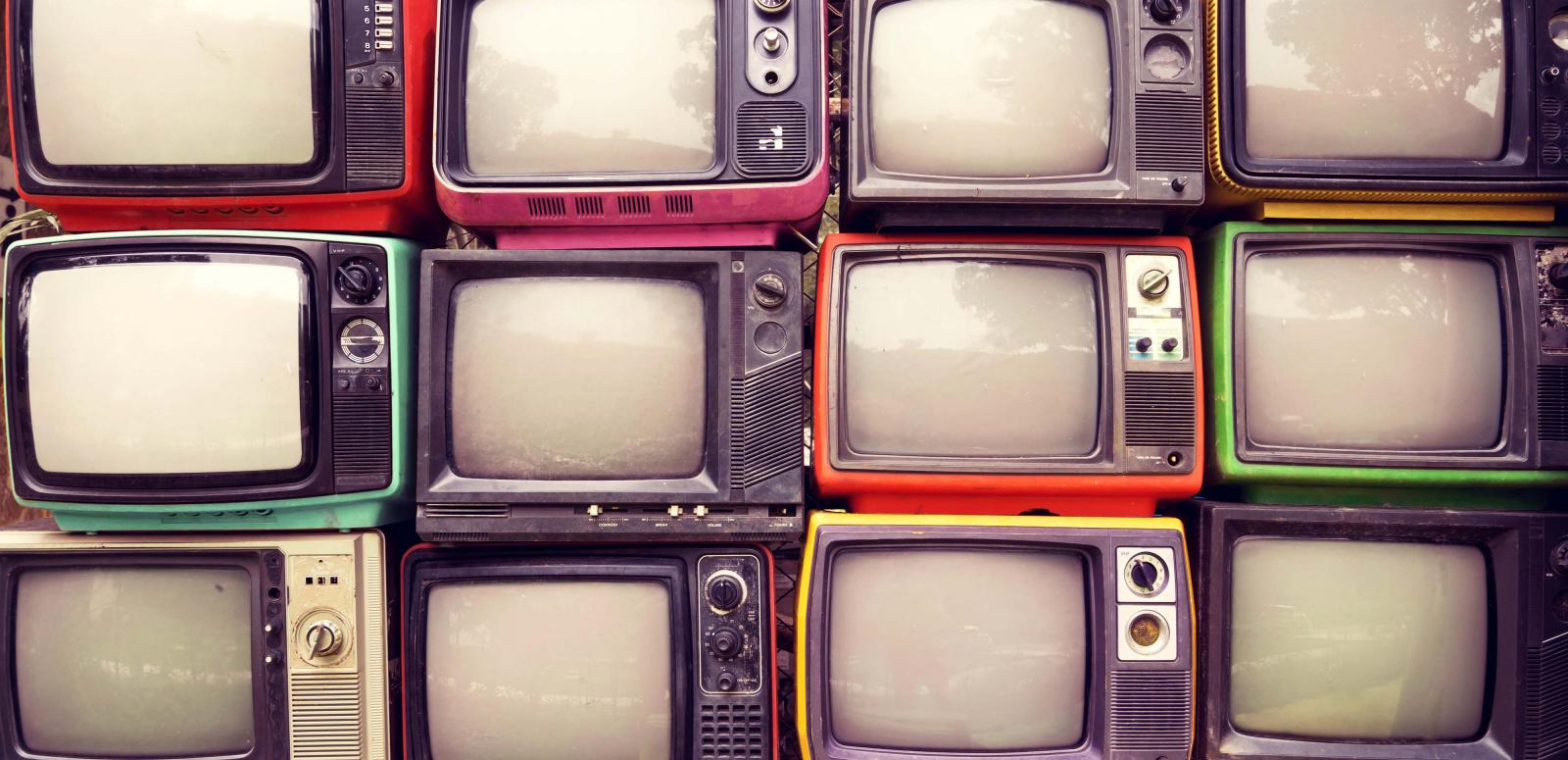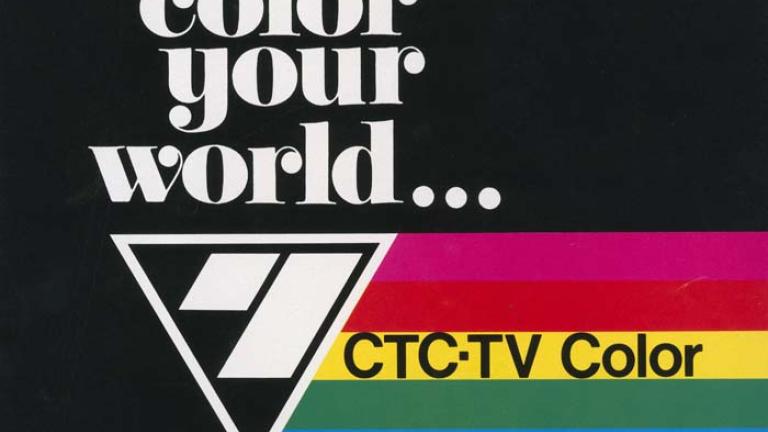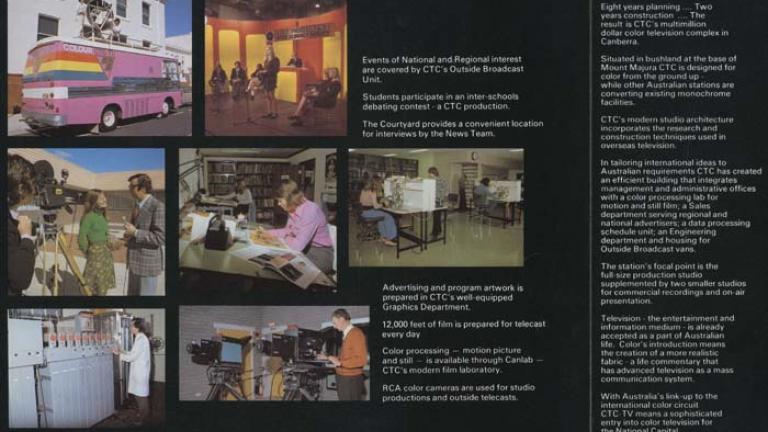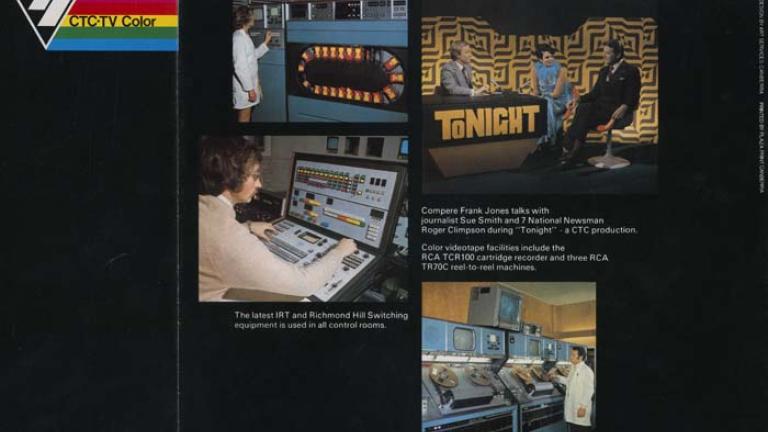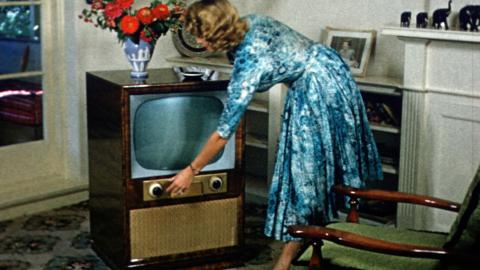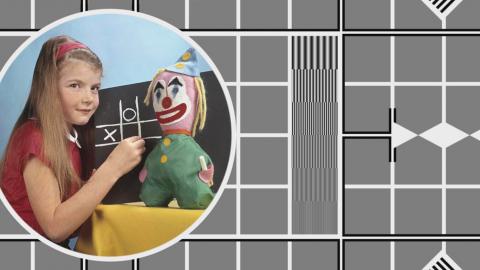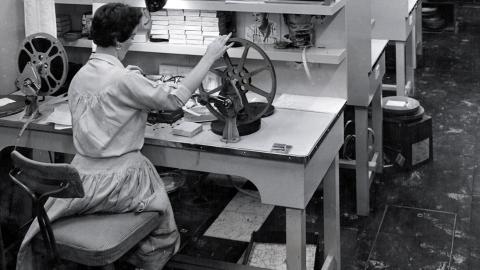Part 2 of our 2-part feature. Read Part 1
Curator Bronwyn Barnett continues her look at the historic arrival of colour TV in Australia on 1 March 1975. What did the TV stations’ colour tests look like? And why was Aunty Jack so opposed to colour TV?
Color vs colour: Throughout the planning stages for colour TV in Australia, newspapers and magazines often used the American spelling of ‘color’, perhaps because Australia was considering the American NTSC standard at the time. Later, the initial on-air promotions for colour TV originated in the US and also used ‘color’ instead of the more familiar ‘colour’.
